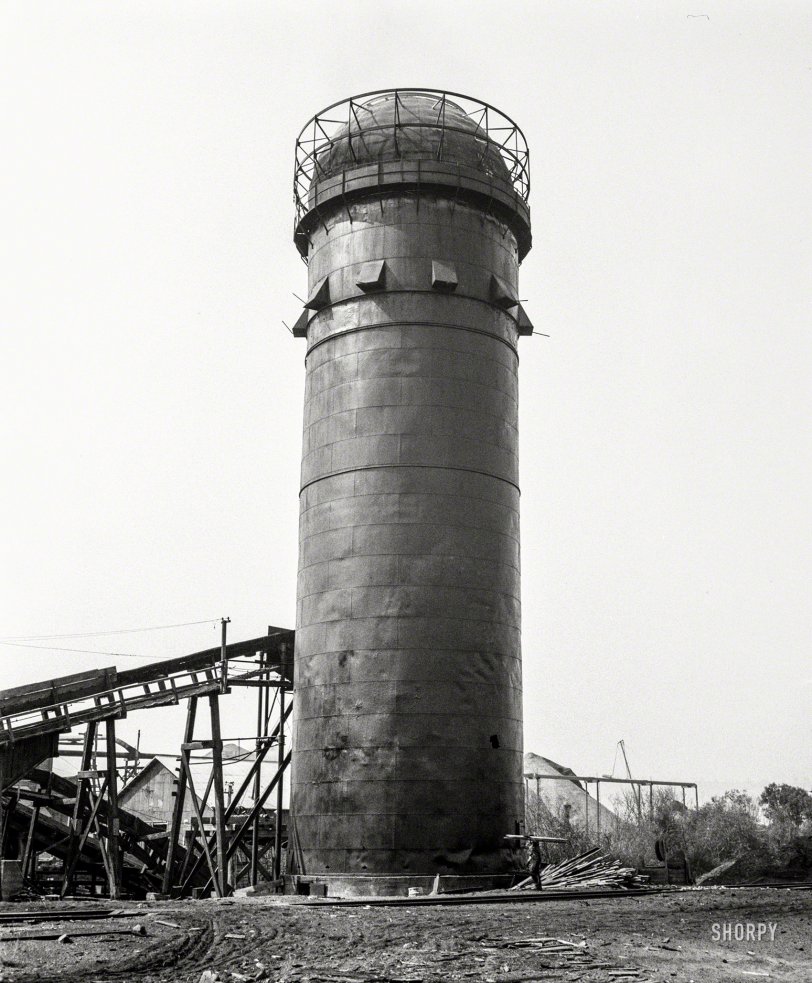


Framed or unframed, desk size to sofa size, printed by us in Arizona and Alabama since 2007. Explore now.
Shorpy is funded by you. Patreon contributors get an ad-free experience.
Learn more.

- Details, Details
- What's that building to the left of the tower?
- Coal Barges
- Bromo-Seltzer
- Inner harbor
- The Basin
- What a headache!
- Giant stepladder?
- Baldwin 62303
- Baldwin VO-1000
- Cold
- No expense spared
- Tough Guys
- Lost in Toyland
- And without gloves
- If I were a blindfolded time traveler
- Smoke Consumer Also Cooks
- Oh that stove!
- Possibly still there?
- What?!?
- $100 Reward
- Freeze Frame
- Texas Flyer wanted
- Just a Year Too Soon
- WWII -- Replacing men with women at the railroad crossing.
- Yes, Icing
- You kids drive me nuts!
- NOT An Easy Job
- I wonder
- Just add window boxes
Print Emporium
An Essential Part: 1939

August 1939. "Pelican Bay Lumber Company. The burner is as characteristic of the Northwest landscape as grain elevators are to the Plains. There are many types of variations. It is an essential part of the sawmill. Disposes of sawdust and waste. Near Klamath Falls, Oregon." Photo by Dorothea Lange. View full size.
Off The Grid
A sawdust burner is part of the plot in the C. J. Box novel "The Disappeared".
There's Gold In Them There Sawdust Now.
When I worked for Georgia Pacific the sawdust was collected as logs and plywood panels were cut to size and sucked outside to a waiting freight car to be sent someplace where there must have been a deficit of sawdust.
Unused wood, bark and damaged panels was also processed in a grinder and reduced to splinters before being sent off. There was very little waste generated.
I always imagined the sawdust was sent to Pringles and combined with potato mush to be made into Pine Cone Delight Potato Chips.
Beehive Burners
In British Columbia these were called beehive burners, since most of them had that shape. The last one I saw in operation was in the 1990s at a lumber mill in Canal Flats, near Cranbrook, B.C. This was at night, and the lower portions of the burner were glowing red hot, and sparks and cinders were flying out of the screen at the top into the dark sky. It was quite dramatic. The mill is still there, but the beehive burner is long gone. The City of New Westminster, near Vancouver, interviewed a worker who maintained a beehive burner here, and CBC television news covered an artist who painted them here.
Usually wigwam shaped.
Most of these waste burners, at least in the Northwest, had flared sides (Google "wigwam burner.") Many of these rusty relics are still in place, although no longer used for reasons of air pollution. In addition, the scraps and sawdust from a lumber mill are no longer considered to be waste. They make up useful biomass which can be used for construction materials, mulch, fuel, etc.
This impressive erection must have been an unusual case.
[In other words, not shaped like a shuttlecock. - Dave]

























On Shorpy:
Today’s Top 5